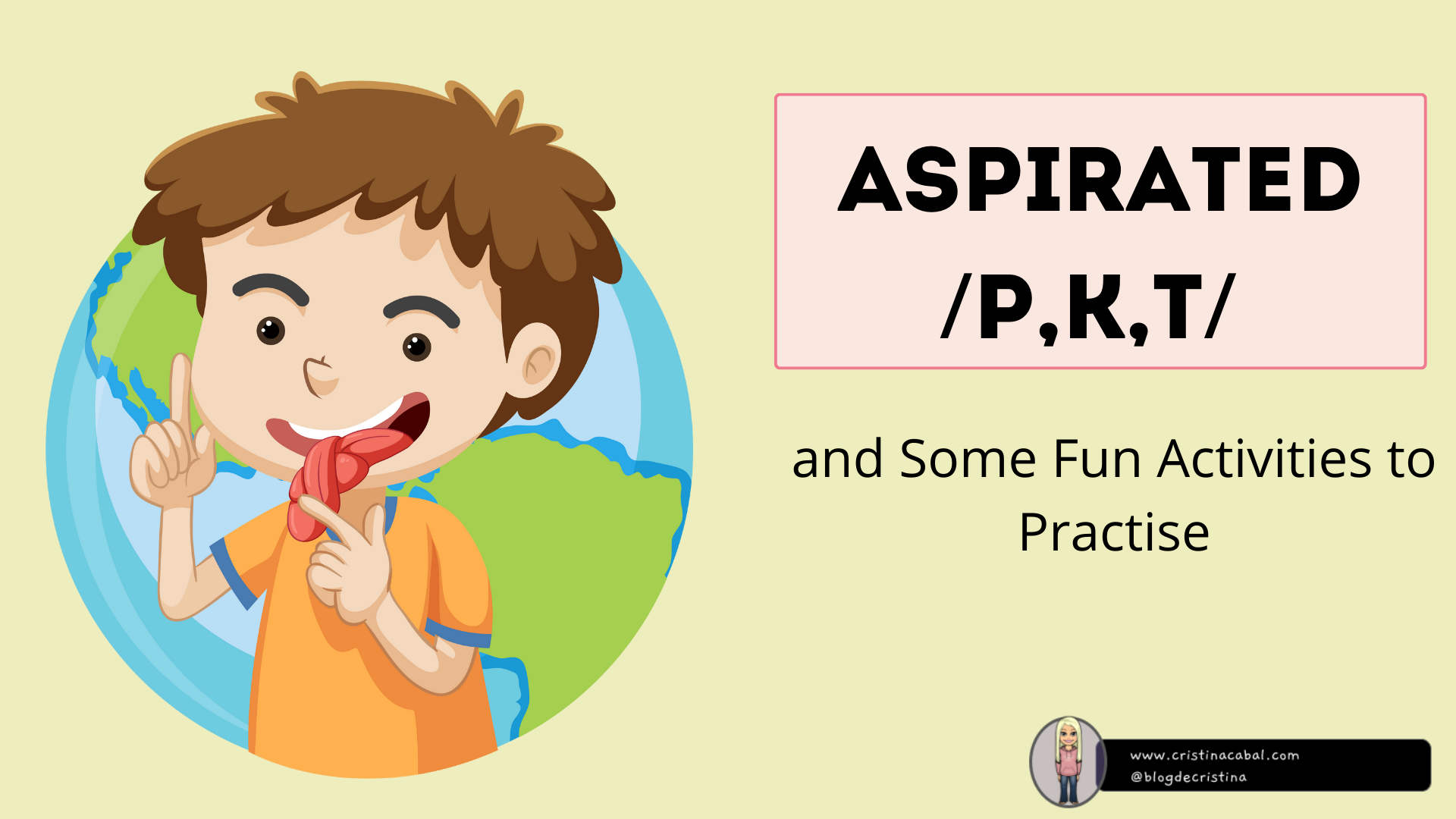“The fortis plosives /p,t,k/, when initial in an accented syllable, are usually accompanied by aspiration” A.C Gimson.
Before you continue reading, you should know I am not a native speaker, so I don’t tend to write many posts on pronunciation. However, some sounds require special attention, and it is my job as a teacher to show my students how to correctly pronounce these sounds. Besides, students love pronunciation activities.

The three sounds we are going to tackle today are easy to pronounce for Romance and Slav speakers and because the sounds seem similar to the sounds in their own native language, these speakers might tend to pronounce these sounds without aspiration.Without aspiration,” there is the danger that the English listener may understand, for example, “bin” instead of “pin” since he interprets lack of aspiration as the lenis /b/”-A.G Gimson
EXERCISE 1: HAVE FUN ( Spanish speakers)
- Write these three Spanish words on the board (tetera, papá, cacao) and ask students to read them in Spanish.
- Now, ask them to imagine how these 3 Spanish words would be pronounced by an English native speaker. Most probably, and with some laughs, it will sound something such as this.
- Give them 1 minute to practise, in pairs.
- Ask: what’s the difference? Explain that aspiration happens when these three sounds are in initial accented position. Emphasize the importance, for communicative purposes, of this aspiration.
EXERCISE 2: THE THEORY. Necessary.
Illustrative video, created by Tools for Clear Speech, which I highly recommend.
- To pronounce /t/: place the tip of your tongue behind your upper teeth. To produce aspiration, push air out of your mouth.
- To pronounce /p/: close your lips and release them, pushing air out of your mouth.
- To pronounce /k/: raise the back of your tongue towards your soft palate. Lung air is compressed behind this closure and then released with force.
/p/ as in “paper” de cristina.cabal
EXERCISE 3: MORE FUN ( and why not )
- Ask students to give you words beginning with /p,t,k/ in initial accented position. Write them on the board

- Take a Kleenex (paper tissue) or a piece of toilet paper. Choose one of the words on the board, for example, “paper”. Hold the piece of paper in front of your mouth and demonstrate the difference between pronouncing non-aspirated /p/ in “paper” and aspirated /p/ “paper”. You might need to rest after exemplifying 🙂
- Allow them some time to practise using the words on the board. Emphasize that the piece of paper must move.
EXERCISE 4: TONGUE TWISTERS
What could be more English than a classic tongue twister?

On the board, write these three below and let them practise in pairs. I was going to say “more fun” but I am going to refrain; I need to become a more serious teacher.
- With /p/, the super popular “Peter Piper”
Peter Piper picked a peck of pickled peppers. A peck of pickled peppers Peter Piper picked.
If you don’t feel up to it, here you can listen to a perfect pronunciation of the tongue twister.
- With /t/, the long… “Betty Botter”
Betty Botter bought some butter. But she said the butter’s bitter, “If I put it in my batter. It will make my batter bitter, But a bit of better butter.- that would make my batter better.
- With /k/ the super difficult …
A cupcake cook in a cupcake cook’s cap cooks cupcakes
And again, If you don’t feel up to it, here you can listen to a perfect pronunciation of the tongue twister.
EXERCISE 5: STUDENTS’ OWN TONGUE TWISTERS
This is going to be fun.
- Put students in pairs and assign them a sound /p/, /t/ or /k/.
- Ask them to imake up a tongue twister with their assigned sound. The tongue twister should have no less than 6 words, and there should be at least 4 words containing the aspirated sound.
- They should write their tongue twisters on a slip of paper. Well, on two slips of paper as every student should have their own slip of paper with his/her own tongue twister in it. Encourage clear handwriting and let them practise before the next step.
- Ask students to stand up and pair up with another student in the class. Exchange slips of paper. Read your classmate’s tongue twister. Before moving to find another partner, exchange slips of paper again so that you take your own tongue twister with you.
- Hope you have enjoyed these activities. I have!!!
